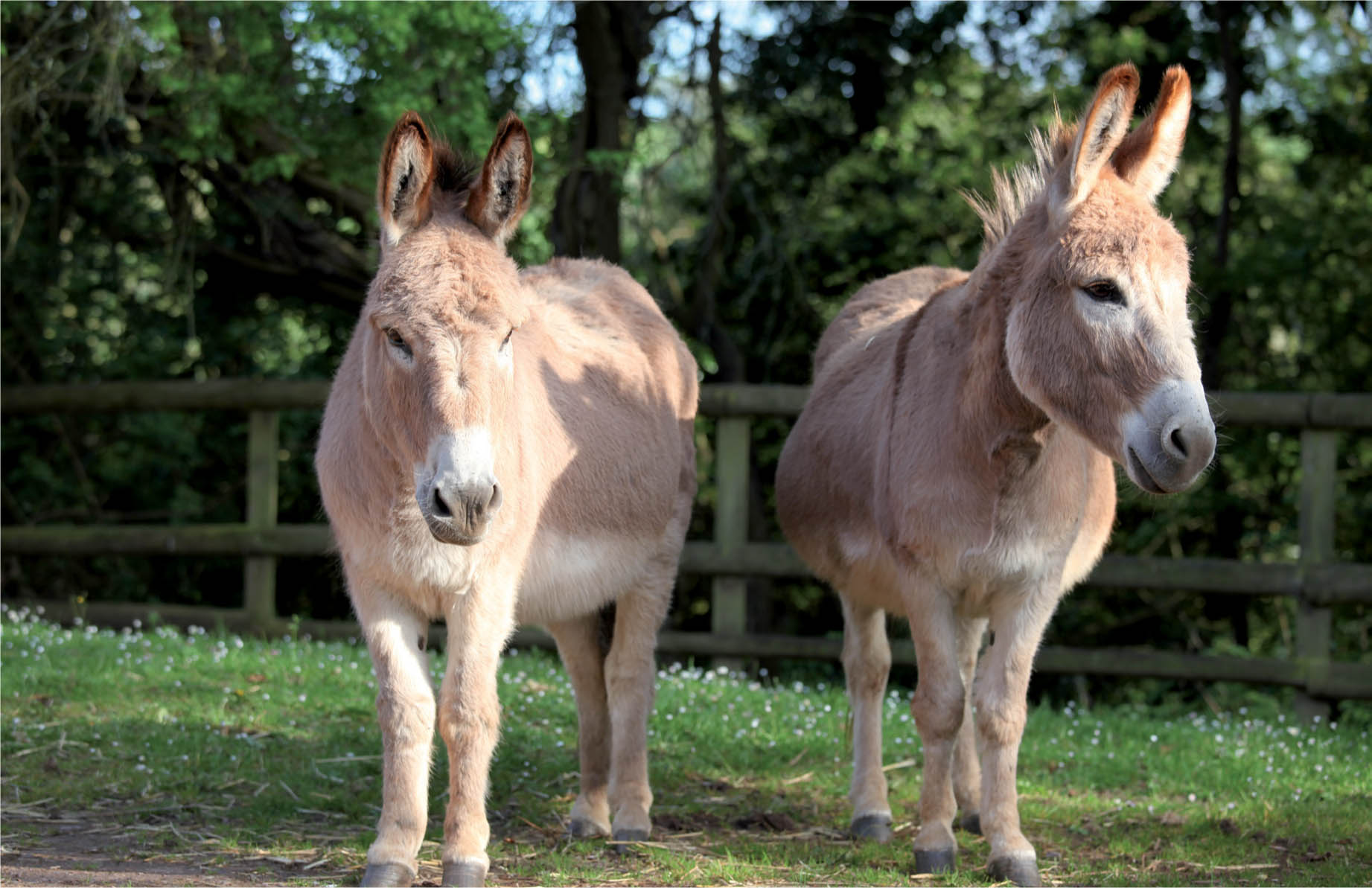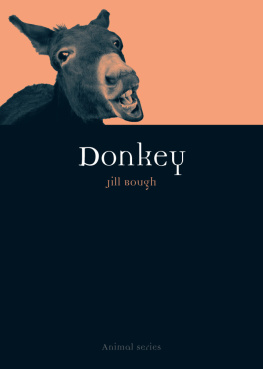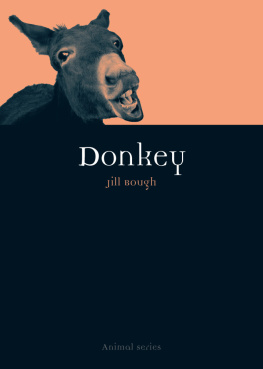THE HEALTHY
Donkey

THE HEALTHY
Donkey
Sarah Fisher & Trudy Affleck

THE CROWOOD PRESS
First published in 2016 by
The Crowood Press Ltd
Ramsbury, Marlborough
Wiltshire SN8 2HR
www.crowood.com
This e-book first published in 2016
Sarah Fisher and Trudy Affleck 2016
All rights reserved. No part of this publication may be reproduced or transmitted in any form or by any means, electronic or mechanical, including photocopy, recording, or any information storage and retrieval system, without permission in writing from the publishers.
British Library Cataloguing-in-Publication Data
A catalogue record for this book is available from the British Library.
ISBN 978 1 78500 172 7
Photographs by Bob Atkins and Sarah Fisher
Dedicated to all donkeys, and to those who love and care for them
Contents
Introduction
Greet every day with enthusiasm
Be loyal to those you love
Share good things with close friends
Be kind
Take a moment to weigh up your options if something bothers you and know when it is time to fight,
flight or stand your ground
Be gentle
Spread humour and joy whether at work or at play
Be strong yet sensitive in equal measure
Have patience with those around you
Be wise
Be true
Be Donkey
We both have many years of experience interacting and living with donkeys and make no apologies for being totally captivated by these intelligent, entertaining, affectionate and peaceful animals. We are not just lovers of our own donkeys; we are passionate ambassadors for each and every one. We wanted to write this book to give you some new ideas and perhaps deeper insights into the wonderful world of donkey guardianship, and to share seventy-five techniques and tips that have enabled us to help donkeys lead happy and fulfilling lives. In our opinion, there are few greater things in life than the companionship of donkeys and we know we are not alone in this belief. Whether you are only just discovering the delights of sharing your life with these incredible beings, are in the process of offering a home to some of the unwanted donkeys currently in need, or are already experienced in many aspects of donkey management and care, we hope you will enjoy exploring rewarding ways of looking after, and connecting with, your glorious donkey friends.
PART 1
Living with Donkeys
A BRIEF HISTORY OF THE DONKEY
The donkey has played a vital role in the history of man, yet there has been minimal research into the domestication of the donkey over the years. A study exploring the origins of the modern donkey (Kimura et al., Ancient DNA from Nubian and Somali wild ass provides insights into donkey ancestry and domestication), however, has concluded that the Nubian ass and a second, potentially extinct, subspecies are the ancestors of the modern donkey. The Somalian ass has been ruled out as a contributor to the domesticated donkeys gene pool.

Analysis of genetic data from modern donkeys reveals the Somali wild ass has considerable mitochondrial divergence from the Nubian wild ass and domestic donkeys; it is no longer considered to be an ancestor.
Despite relatively limited available genetic data, evidence from archaeological sites suggests that domestication of the wild donkey, well adapted to arid environments, began approximately five thousand years ago in Africa, enabling early societies to become more mobile, increase trade and spread further afield. The discovery and analysis of ten donkey skeletons buried in Egypt about 3,000 BC (Rossel et al.) confirmed that donkeys were used as beasts of burden in Egyptian society, with the skeletons showing wear and tear consistent with carrying heavy loads.
In an article entitled Evaluating the Roles of Directed Breeding and Gene Flow in Animal Domestication, Fiona B. Marshall et al. examine the domestication and management process of the donkey and highlight the important role that donkeys continue to play as working animals in the lives of African pastoralists today. The article illustrates how the donkeys long gestation rate, resilience, ability to range widely in search of a mate and use as a means of transport over significant distances all contributed to limited directed breeding; historically herders relied in part on wild and feral donkeys for herd growth, as opposed to actively managing reproduction.
It is thought that the domestic donkey was brought to the United Kingdom by the Romans. Over the centuries the European donkey has been used in agriculture, as a means of transport, for the production of mules and by the military, but as technology advanced, so the working donkey became largely redundant. Changes in agricultural practice have had a devastating impact on many donkey breeds; of the 162 official breeds of donkey worldwide, only five are not endangered, and six are sadly already extinct (Rischkowsky & Pilling, 2007).

The small stature, intelligence and friendly character of the Miniature Mediterranean donkey make them ideal family companions, provided they are given appropriate outlets for their natural drives and desires.
European donkeys were probably introduced to the Americas by Christopher Columbus in the fifteenth century and by Spanish conquistadors in the sixteenth century. They were used as working animals and for breeding mules, and the trend continued through subsequent centuries with large numbers of donkeys being imported during the gold rush in the nineteenth century. They lost their value as working animals following the introduction of the railways and the end of the mining era.
In Europe small breeds like the Miniature Mediterranean donkey, found in Sardinia and Sicily, were used to turn grinding stones and transport water. Larger breeds, such as the distinctive French Poitou and the now rare Spanish Andalusian donkey, were used for the production of large working mules. Although the Miniature Mediterranean is in decline in its native countries, this delightful breed can be found in the USA, Canada, the UK and other European countries thanks to Roger Green, who imported a small herd into the USA in the 1920s. Roger Green is quoted as saying Miniature donkeys possess the affectionate nature of a Newfoundland, the resignation of a cow, the durability of a mule, the courage of a tiger and an intellectual capability only slightly inferior to mans.
There are an estimated 4050 million donkeys in the world today, the majority of them working animals essential to the success of many communities worldwide, providing low-cost power and transport. The robust, endearing donkey has stamina, is relatively easy to manage, utilizes feed more efficiently than a horse of comparable size, is patient, and tolerates thirst better (and rehydrates more quickly) than horses or oxen. With the majority of specific breeds in sharp decline, it is the mixed breed, standard donkey that is now most commonly kept both as a working animal and as a pet.



















